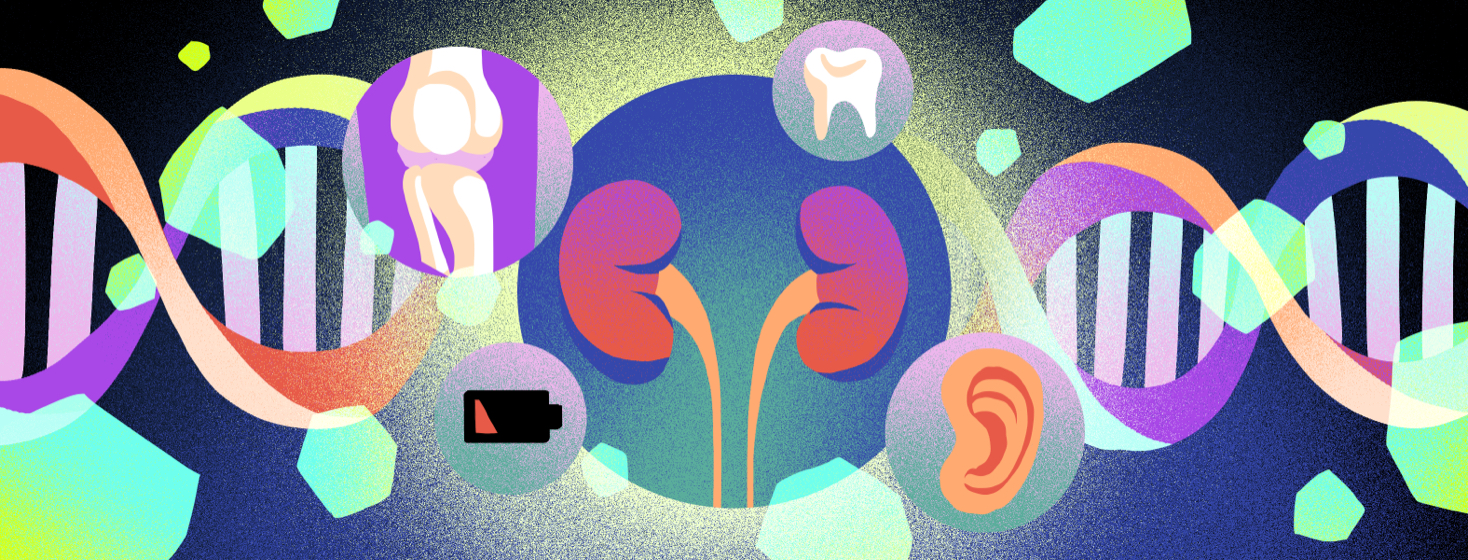What Is X-linked Hypophosphatemia?
Reviewed by: HU Medical Review Board | Last reviewed: July 2023 | Last updated: September 2023
X-linked hypophosphatemia (XLH) is a rare disorder that causes low phosphorus levels. This happens because people with this condition pass the mineral phosphorus in the urine rather than using it properly.1
Hypophosphatemia is pronounced hi-po’-fos-fa-tee’-mia.
Since phosphorus (sometimes called phosphate) is needed for many processes in the body, low phosphorus levels cause serious symptoms. The bones, teeth, hearing, and energy levels are most affected.1,2
XLH is also called X-linked hypophosphatemic rickets or phosphate rickets.2,3
Who gets XLH?
X-linked hypophosphatemia occurs in about 1 in every 20,000 people. Most people inherit the condition from one of their parents. XLH affects all genders and ages.3
What causes X-linked hypophosphatemia?
X-linked hypophosphatemia is caused by a mutation (change) of the PHEX gene on the X chromosome. This mutation keeps the kidneys from processing phosphorus correctly.2,3
X-linked means the gene that causes XLH is located on the X chromosome. Chromosomes contain all the genes we inherit from our parents. Females have 2 X chromosomes, one from their mother and one from their father. Males have 1 X chromosome from their mother and one Y chromosome from their father.2
If a mother has an X-linked mutation, her children, whether male or female, have a 50 percent chance of inheriting the mutation. A father with an X-linked mutation will pass the mutation to all of his female children and none of his male children.2
With conditions like XLH, only one mutated gene is needed for the baby to have the disease. It is called an autosomal dominant disorder.4
In rare cases, XLH occurs for the first time in someone without inheriting it. This is called a de novo mutation.2
Anyone with a PHEX mutation will have x-linked hypophosphatemia.2
What are the symptoms of X-linked hypophosphatemia?
Phosphorus plays an important role in the body. It is necessary to build and repair bones and teeth, make muscles contract, and for cells to make energy. Phosphorus supports growth and development. Without enough phosphorus, the bones become weak (rickets) and become deformed.3
The main symptoms of XLH are:2,4
- Rickets (bowed legs or knock knees caused by weak bones)
- Growth problems and short height
- Delays in or problems walking
- Dental problems such as tooth abcesses and tooth pain
- Bone and joint pain
- Fatigue
- Muscle weakness
- Enlarged or swollen wrists and ankles
- Arthritis
- Hearing problems
How is XLH diagnosed?
X-linked hypophosphatemia is usually diagnosed only when people start to show symptoms. Most people begin to show symptoms as an infant or in childhood.4
XLH is diagnosed with:2
- A complete medical history, including a family history of rickets or other bone disease
- A physical exam
- Blood and urine tests
- X-rays or other imaging tests to check bone health
A person with XLH will have low phosphorus levels in their blood and high levels of the hormone FGF23. Your doctor will want to rule out other conditions such as other types of rickets, a vitamin D deficiency, or a tumor.2
Your doctor may recommend genetic testing to confirm XLH.2
Finding an accurate diagnosis may be delayed since XLH is a rare condition. However, early diagnosis and treatment helps prevent symptoms from getting worse.2,5
How is XLH treated?
Because X-linked hypophosphatemia is a complex disease, treatment requires a team of specialists. The 2 main treatments for XLH are:2.6
- Phosphate supplements and strong vitamin D (usually calcitriol)
- Bursomab (Crysvita®)
The supplements increase phosphorus and vitamin D in the body so the bones and teeth have the nutrients they need to be strong. Bursomab works by turning off FGF23, which leads to increase phosphorus levels in the blood. This allows more phosphorus to be absorbed for the bones and teeth.2
Other treatments will be needed to address the many symptoms and complications of XLH, such as:4
- Growth hormones
- Pain relief
- Physical and occupational therapy
- Regular dental care
- Surgery to fix broken, fractured, or misaligned bones and joints
- Hearing aids
Because XLH is so rare, there are no recommendations for managing and treating the disease and its complications. Regular checkups are recommended to help keep symptoms from getting worse.1

Join the conversation